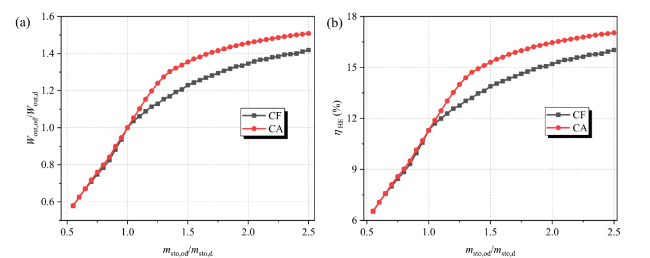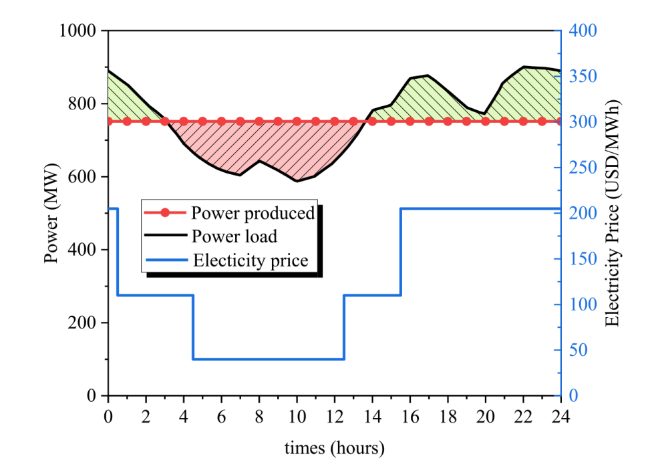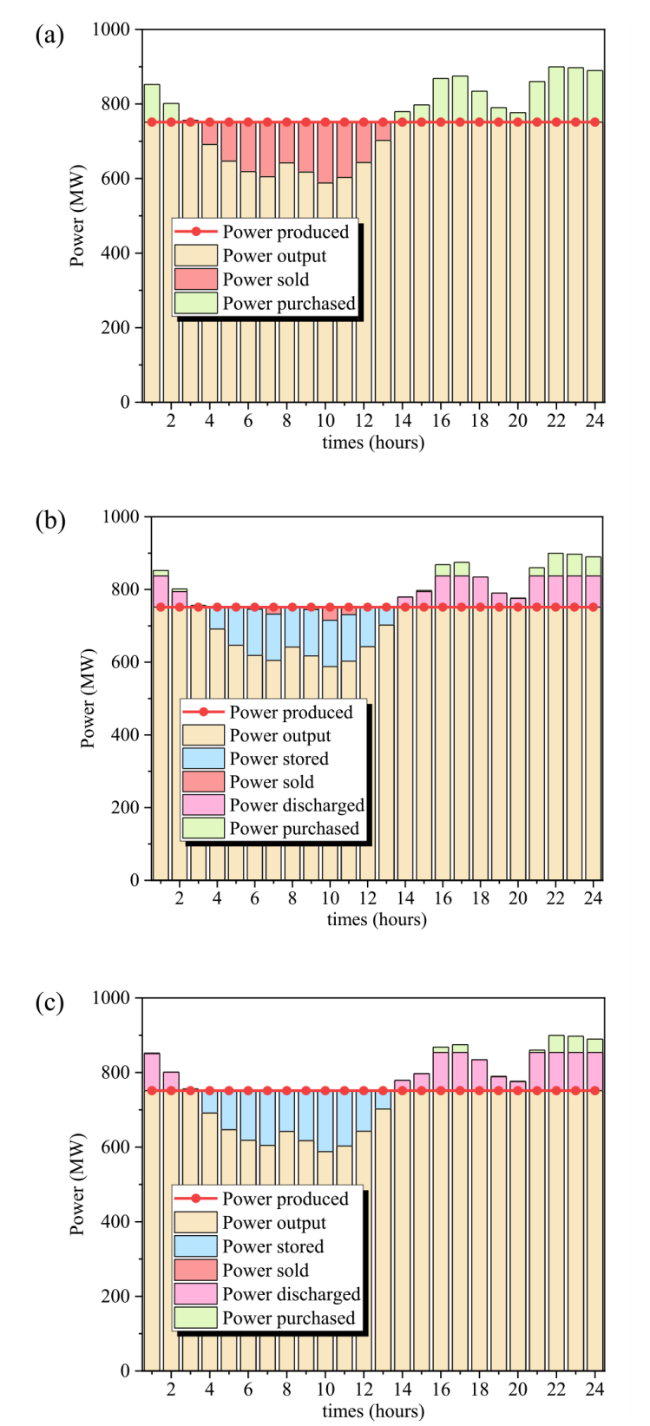The primary energy storage technologies could be divided into pump hydro energy storage, compressed air energy storage, liquid air energy storage, electrochemical energy storage, and pump heat energy storage. Pumped hydro energy storage (PHES) is the most common technology because of its high maturity (with energy storage efficiency as 75%–85%), reliability (with lifetime around 50–100 years), and flexibility (with power rating between 100–5000 MW) [
3]. According to research by Li et al., PHES effectively reduces renewable curtailment and carbon emissions for Northwest China [
4]. However, the construction cost of PHES varies from \$1000/kW to \$2500/kW and the payback period is typically 40–80 years, which is significantly higher than other energy storage methods [
5]. Besides, the application of PHES is limited by the geographical location, Haas et al. [
6] investigated PHES potential in the Andes of Chile, Peru, and Bolivia, and the results showed that only partial districts are suitable for the construction of PHES. Compressed air energy storage (CAES) has the advantages of large scale, low cost, long life cycle, higher efficiency and long storage period [
7]. However, CAES is also limited by the geographical conditions since it needs underground caverns or custom gas tank to store compressed gas. Liquid air energy storage (LAES) is considered an enhanced version of CAES due to the high energy density, absence of geographical constraints and lower investment costs [
8]. However, mismatch usually appears among the quantity and quality of the cold and heat energy in LAES system, resulting in the decline of the energy storage efficiency. To improve the energy storage efficiency of LAES, the combination of LAES with waste heat recovery system is required. Peng et al. [
9] coupled LAES with Organic Rankine Cycle (ORC) and the energy storage efficiency could be improved from 41.3% to 48.6%. Nevertheless, the combined LAES system is generally complex and the application scenarios are usually limited. Electrochemical energy storage has versatile applications due to its fast response time and scalability [
10]. However, the uncertainty about costs and performance of battery technologies impedes their large-scale deployment in the electricity system [
11]. Pumped thermal energy storage (PTES) is a huge-scale and low-cost energy storage technology, and it could simultaneously generate thermal energy and power on the demand side [
12]. In addition, the main flaw of low energy storage efficiency could be amended by integrating with low-grade heat source. Frate et al. [
13] proposed a novel PTES system with thermal integration, the temperature difference between evaporation process and condensation process is reduced, and the coefficient of performance (
COP) of heat pump sub-system is improved. As a result, the energy storage efficiency could be significantly promoted and could even beyond 100%. Therefore, Thermal-integrated pumped thermal electricity storage (TI-PTES) is a promising energy storage technology and could play a crucial role in peaking carbon dioxide emission and carbon neutrality.


















